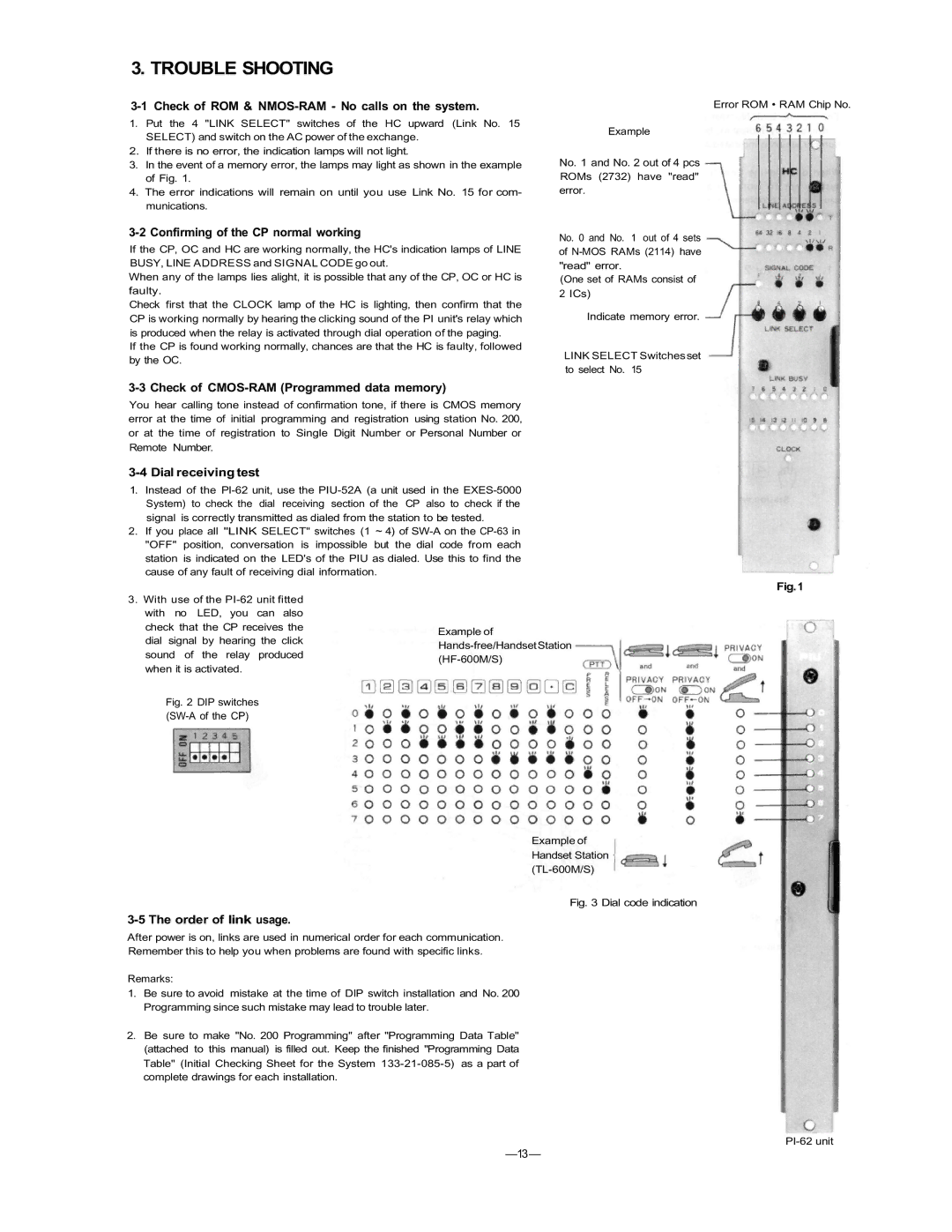
3. TROUBLE SHOOTING
3-1 Check of ROM & NMOS-RAM - No calls on the system.
1.Put the 4 "LINK SELECT" switches of the HC upward (Link No. 15 SELECT) and switch on the AC power of the exchange.
2.If there is no error, the indication lamps will not light.
3.In the event of a memory error, the lamps may light as shown in the example of Fig. 1.
4.The error indications will remain on until you use Link No. 15 for com- munications.
3-2 Confirming of the CP normal working
If the CP, OC and HC are working normally, the HC's indication lamps of LINE BUSY, LINE ADDRESS and SIGNAL CODE go out.
When any of the lamps lies alight, it is possible that any of the CP, OC or HC is faulty.
Check first that the CLOCK lamp of the HC is lighting, then confirm that the CP is working normally by hearing the clicking sound of the PI unit's relay which is produced when the relay is activated through dial operation of the paging.
If the CP is found working normally, chances are that the HC is faulty, followed by the OC.
3-3 Check of CMOS-RAM (Programmed data memory)
You hear calling tone instead of confirmation tone, if there is CMOS memory error at the time of initial programming and registration using station No. 200, or at the time of registration to Single Digit Number or Personal Number or Remote Number.
3-4 Dial receiving test
1.Instead of the
2.If you place all "LINK SELECT" switches (1 ~ 4) of
Error ROM • RAM Chip No.
Example
No. 1 and No. 2 out of 4 pcs ROMs (2732) have "read" error.
No. 0 and No. 1 out of 4 sets of
(One set of RAMs consist of 2 ICs)
Indicate memory error.
LINK SELECT Switches set to select No. 15
Fig.1
3.With use of the
Example of
Fig. 2 DIP switches (SW-A of the CP)
Example of Handset Station (TL-600M/S)
Fig. 3 Dial code indication
3-5 The order of link usage.
After power is on, links are used in numerical order for each communication.
Remember this to help you when problems are found with specific links.
Remarks:
1.Be sure to avoid mistake at the time of DIP switch installation and No. 200 Programming since such mistake may lead to trouble later.
2.Be sure to make "No. 200 Programming" after "Programming Data Table" (attached to this manual) is filled out. Keep the finished "Programming Data Table" (Initial Checking Sheet for the System
— 13—
